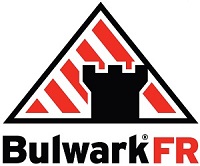Bulwark FR Quiz 2019 Answers
 THANK YOU for taking our quiz! Click here to download a complimentary pdf for the selection, use, care, and maintenance of FR clothing!
THANK YOU for taking our quiz! Click here to download a complimentary pdf for the selection, use, care, and maintenance of FR clothing!
Here are the answers:
1. Which resource provides information about how to select, use and properly maintain FR clothing?- A) NFPA® 2112
- B) NFPA® 2113
- C) OSHA
- D) Third-party certifications
Answer description: While 2112 is an important standard on how to specify the minimum performance requirements and test methods for flame-resistant fabrics and components, it does not provide any guidance for the selection, use, care, and maintenance of FR clothing. NFPA® 2113 is your go-to safety standard in regard to building your FR clothing program.
2. What is an arc flash?
- A) A dangerous release of energy created by an electrical fault in open air from phase to phase, or phase to ground contact
- B) An explosion that results when an ignition source contacts a fuel such as combustible dust or ignitable gas or vapor
- C) A flame that leaps up and over a subject, then continues burning anything else in its path
- D) Ultraviolet light that flashed during a thermal event, causing temporary or permanent blindness
Answer description: The arc flash hazard affects all who work in and around energized electrical equipment. This can include general industry electricians, maintenance workers and operators, as well as our electric utilities, including transmission, distribution, generation and metering.
3. What makes up an arc flash?
- A) Acoustic energy
- B) Intense light
- C) Pressure wave
- D) Thermal energy
- E) All of the above
Answer description: An arc flash consists of all four elements: intense light, acoustic energy, pressure wave and thermal energy. The explosion resulting from an arc flash produces extremely high temperatures, acoustic energy and concussive force. When a person is in close proximity to the arc flash, serious burn injury, blindness and even death can occur.
4. What are inherently flame-resistant fabrics? They:
- A) Are engineered to be flame-resistant at the fiber level, and do not require any additional finishing
- B) Are treated with fire-retardant chemicals that slow the rate at which the flame-resistant fabric burns
- C) Keep people cool during thermal events to prevent second-and third-degree burns from the heat of the flames
- D) Make individuals 100% fireproof, even during intense thermal events such as flash fires
Answer description: Inherently FR fabrics are just that: inherently flame-resistant at the fiber level without any additional alterations. Treated FR fabric, however, is not inherently flame-resistant. It requires chemical alterations and may not be permanent.
5. What is necessary for a combustible dust fire?
- A) Fuel
- B) Ignition
- C) Oxygen
- D) Confinement
- E) Deflagration
- F) All of the above
Answer description: Inherently FR fabrics are just that: inherently flame-resistant at the fiber level without any additional alterations. Treated FR fabric, however, is not inherently flame-resistant. It requires chemical alterations and may not be permanent.
6. Can I add the arc ratings of 2 FR garments?
- A) Yes, two arc ratings can be added resulting in the sum total of both
- B) No, you must get your layered system tested to know your combined arc rating
Answer description: 1 + 1 does not always = 2 when layering arc-rated garments. The only true way to figure out the combined arc rating of layered garments is to have them tested.
7. What is a flash fire?
- A) A fire that spins around, much like a tornado or cyclone
- B) A flame blast that pushes people and anything else in its path forward
- C) A rapid moving flame front through diffuse fuel without damaging pressure
- D) A stationary fire that occurs as a result of an electrical spark
Answer description: A flash fire is a rapid moving flame front that can be caused by a diffuse fuel, such as dust, gas, or the vapors of an ignitable liquid, without the production of damaging pressure. In the Oil & Gas industry, which includes exploration, drilling, field services and refining, flash fires are the primary hazard FR protects against.
8. Are all arc-rated garments flame-resistant?
- A) Yes, all AR garments are FR
- B) No, not all AR garments are FR
Answer description: All arc-rated garments are flame-resistant, but not all flame-resistant garments are arc-rated.
9. What is the main advantage of wearing FR coveralls over FR shirts and pants?
- A) None
- B) Escapability
- C) Ease of use
- D) Comfort
Answer description: The ability to remove any clothing that catches fire quickly is key to reducing the amount of burn injury to the wearer, and coveralls are easier to remove than most shirts and pants.
10. Can you use insect repellent on FR garments?
- A) Yes
- B) No
- C) Maybe
Answer description: The main active ingredient in most insect repellents, DEET, is flammable and has the potential to ignite and continue to burn. However, there are non-DEET alternatives that are safe for AR clothing, see the manufacturer’s test reports.
Get our new eMagazine delivered to your inbox every month.
Stay in the know on the latest safety trends.
SUBSCRIBE TODAYCopyright ©2024. All Rights Reserved BNP Media.
Design, CMS, Hosting & Web Development :: ePublishing